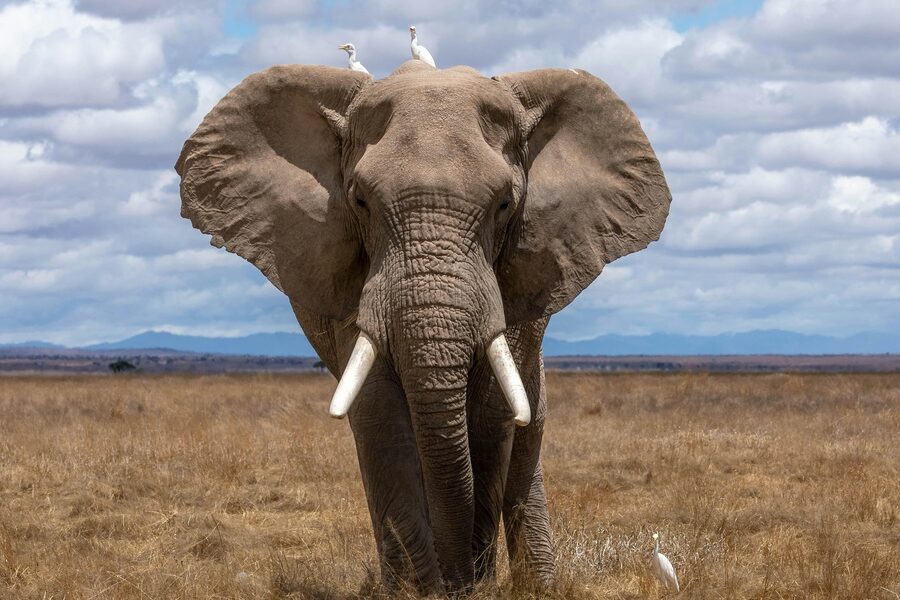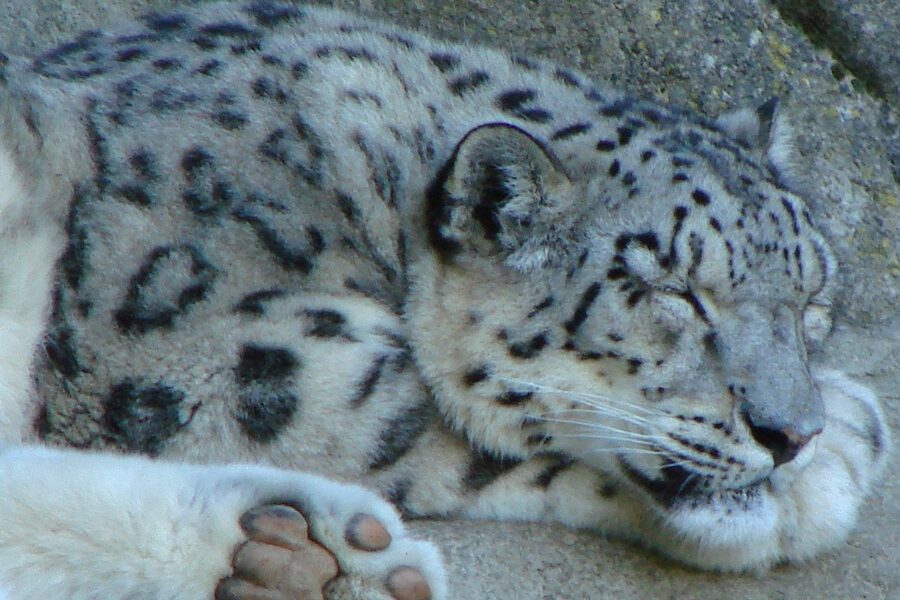Over 30 species serve as primary consumers in rainforest ecosystems, playing a vital role in the flow of energy from plants to higher animal levels. These animals range from small insects to large mammals like the Western Lowland Gorilla. They live in different parts of the rainforest, such as the canopy, understory, and forest floor, each adapting uniquely to their environment and helping maintain the balance of these rich habitats.
Below is a detailed list of rainforest primary consumers, including their scientific names, main diets, and habitat regions. Use this information to understand the diversity and ecological roles of these important herbivores and plant-eaters.
What Are Rainforest Primary Consumers?
Rainforest primary consumers are animals that eat plants, leaves, fruits, flowers, and other plant parts as their main food source. They form the first step in the animal food chain after plants. These consumers include mammals, birds, insects, and reptiles, each species adapted to specific parts of the rainforest. Their feeding habits also help spread seeds and recycle nutrients, supporting the health of the forest.
How Do Primary Consumers Impact the Rainforest Ecosystem?
Primary consumers shape rainforest ecosystems by controlling plant growth and aiding seed dispersal, which helps new plants grow. Insects like leafcutter ants farm fungus using cut leaves, while mammals like agoutis bury nuts that often sprout into new trees. Larger herbivores, such as elephants and gorillas, modify the forest structure by feeding on large amounts of vegetation. Together, these consumers keep the rainforest balanced and thriving.
Rainforest Primary Consumers
| Common Name | Scientific Name | Primary Diet | Habitat Region |
|---|---|---|---|
| Capybara | Hydrochoerus hydrochaeris | Grasses and aquatic plants | Amazon |
| Three-toed Sloth | Bradypus variegatus | Leaves | Central and South America |
| Okapi | Okapia johnstoni | Leaves, buds, and twigs | Congo |
| Malayan Tapir | Tapirus indicus | Leaves and young shoots | Southeast Asia |
| Orangutan | Pongo pygmaeus | Fruits, leaves, and bark | Southeast Asia (Borneo, Sumatra) |
| Western Lowland Gorilla | Gorilla gorilla gorilla | Stems, leaves, and pith | Congo |
| Howler Monkey | Alouatta palliata | Leaves and fruits | Central and South America |
| Spider Monkey | Ateles geoffroyi | Fruits | Central and South America |
| Black-and-white Colobus Monkey | Colobus guereza | Young leaves and flowers | Central Africa |
| Spectacled Flying Fox | Pteropus conspicillatus | Nectar, pollen, and fruit | Australia (Queensland) |
| Agouti | Dasyprocta punctata | Fruits and nuts | Central and South America |
| Amazonian Manatee | Trichechus inunguis | Aquatic plants | Amazon |
| Tree Kangaroo | Dendrolagus matschiei | Leaves, flowers, and moss | New Guinea |
| Hoatzin | Opisthocomus hoazin | Leaves | Amazon |
| Scarlet Macaw | Ara macao | Fruits, nuts, and seeds | Central and South America |
| Keel-billed Toucan | Ramphastos sulfuratus | Fruits | Central and South America |
| Rhinoceros Hornbill | Buceros rhinoceros | Fruits and figs | Southeast Asia |
| Southern Cassowary | Casuarius casuarius | Fallen fruit | Australia and New Guinea |
| Sword-billed Hummingbird | Ensifera ensifera | Nectar | Andes (Cloud Forests) |
| Green Iguana | Iguana iguana | Leaves, flowers, and fruit | Central and South America |
| Red-footed Tortoise | Chelonoidis carbonarius | Fruits, flowers, and fungi | Amazon and Caribbean |
| Leafcutter Ant | Atta cephalotes | Farmed fungus | Central and South America |
| Blue Morpho Butterfly | Morpho peleides | Rotting fruit juice (adult), leaves (larva) | Central and South America |
| Stick Insect | Phasmatodea (Order) | Leaves | Global (Widespread in rainforests) |
| Rainforest Termite | Nasutitermes corniger | Wood and decaying plant matter | Global (Widespread in rainforests) |
| Rainforest Cicada | Cicadidae (Family) | Plant sap (xylem fluid) | Global (Widespread in rainforests) |
| Giant African Millipede | Archispirostreptus gigas | Decaying plant matter | East Africa |
| Proboscis Monkey | Nasalis larvatus | Leaves and seeds | Southeast Asia (Borneo) |
| Glass Frog Tadpole | Hyalinobatrachium fleischmanni | Algae and detritus | Central and South America |
| Asian Elephant | Elephas maximus | Grasses, bark, leaves, and fruit | Southeast Asia |
Images and Details
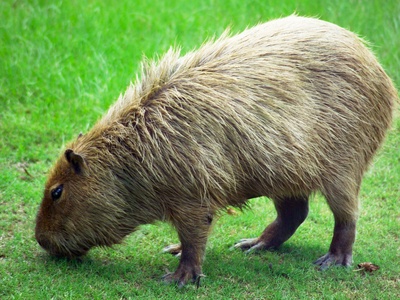
Capybara
The world’s largest rodent, the capybara is a semi-aquatic mammal often found near rivers and lakes. They are highly social animals that graze on grasses, playing a similar ecological role to small hippos in their watery habitats.
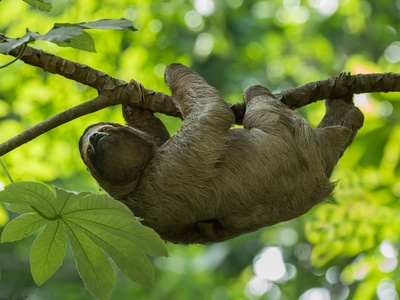
Three-toed Sloth
Famous for their incredibly slow movement, three-toed sloths are arboreal mammals with a specialized, low-energy diet of leaves. Their slow metabolism and unique gut bacteria allow them to digest tough plant matter that other animals cannot.
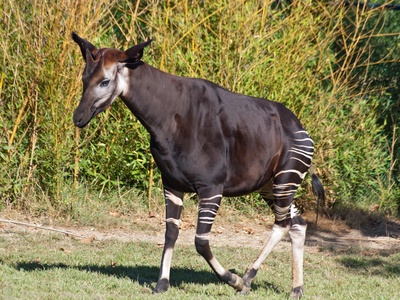
Okapi
Known as the “forest giraffe,” the okapi is the only living relative of the giraffe. Its striped hindquarters provide camouflage in the dense Ituri Forest. This elusive herbivore uses its long, prehensile tongue to strip leaves from branches.
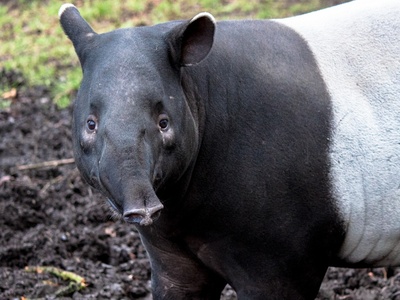
Malayan Tapir
With its distinctive black-and-white pattern, the Malayan tapir is a large, solitary browser active mostly at night. Its flexible, prehensile snout helps it grab leaves and shoots in the dense undergrowth of the rainforest floor.
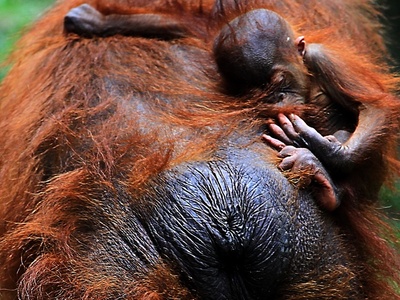
Orangutan
The “person of the forest,” the orangutan is one of the great apes and is the world’s largest tree-dwelling mammal. These highly intelligent primates are primarily frugivores, playing a crucial role in seed dispersal throughout their forest home.
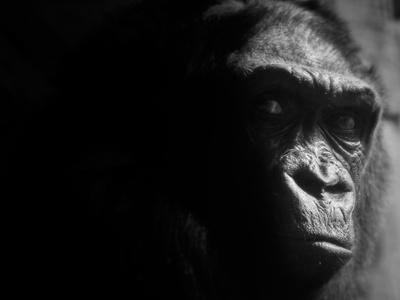
Western Lowland Gorilla
The smallest gorilla subspecies, these powerful primates are gentle herbivores. They live in family groups and spend their days foraging for fibrous plants like stems and pith, rarely climbing high into trees despite their strength and agility.
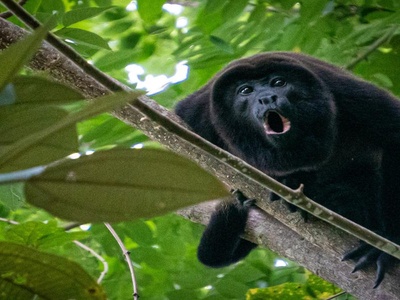
Howler Monkey
Named for their incredibly loud calls that can travel for miles through the forest, howler monkeys are among the largest New World monkeys. They have a slow metabolism adapted to a diet of tough leaves, spending much of their day resting.

Spider Monkey
Named for their long, spider-like limbs and prehensile tail, these monkeys are incredibly agile canopy dwellers. They are specialist frugivores, feeding on ripe fruit and playing a vital role as long-distance seed dispersers for large-seeded trees.
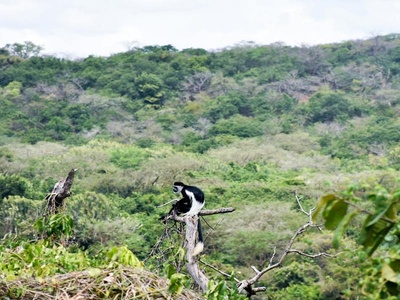
Black-and-white Colobus Monkey
These monkeys are specialized leaf-eaters with a complex stomach to digest cellulose. Lacking thumbs, they use their other four fingers like a hook to pull branches towards them. Their striking black fur and long white mantle make them distinctive.
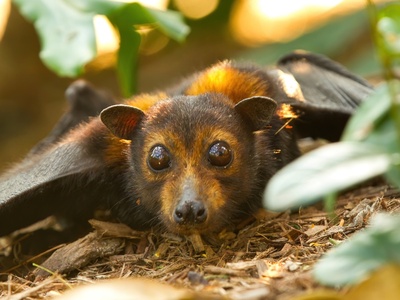
Spectacled Flying Fox
This large fruit bat gets its name from the pale fur around its eyes, resembling spectacles. As nocturnal foragers, they are vital pollinators and seed dispersers for many rainforest trees, traveling long distances to feed on blooming flowers and ripe fruit.
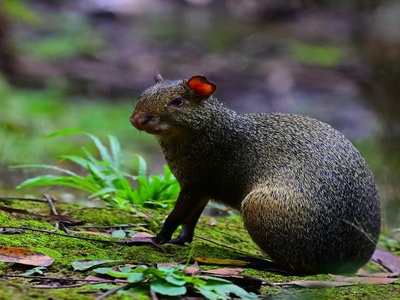
Agouti
These rabbit-sized rodents are critical seed dispersers. Agoutis have strong teeth to open hard nuts, like the Brazil nut, and they practice “scatter-hoarding” by burying excess nuts, many of which are forgotten and grow into new trees.
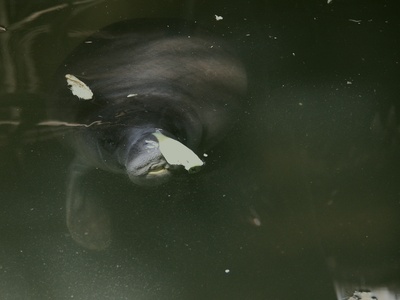
Amazonian Manatee
A gentle giant of the Amazon’s rivers, this is the smallest manatee species and lives exclusively in freshwater. It feeds on floating vegetation like water hyacinths, helping to keep waterways clear and cycling nutrients within the aquatic ecosystem.
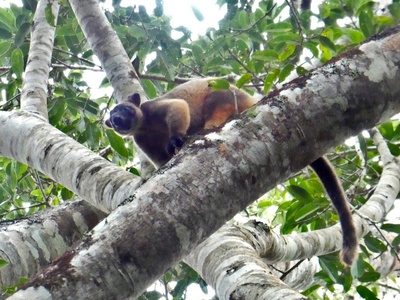
Tree Kangaroo
An unlikely canopy resident, the tree kangaroo is a marsupial that has adapted to life in the trees. Clumsy on the ground but agile in the branches, it forages for leaves from a variety of rainforest trees and ferns.
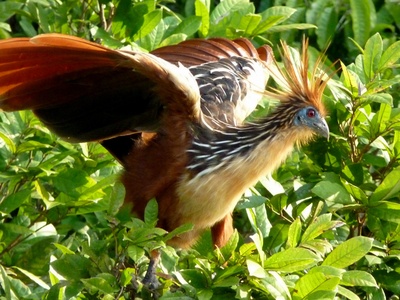
Hoatzin
Often called the “stinkbird” due to its manure-like odor, the hoatzin is a unique folivore. It uses bacterial fermentation in its crop to break down leaves, a process similar to that of a cow. Chicks famously have claws on their wings.
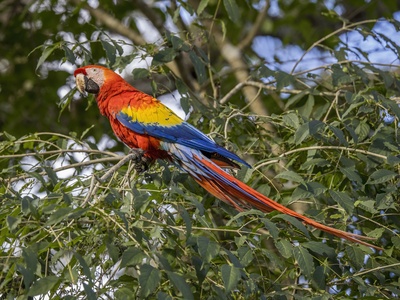
Scarlet Macaw
One of the most iconic rainforest birds, the Scarlet Macaw is known for its brilliant plumage. It uses its powerful beak to crack open hard nuts and seeds. They often congregate at clay licks to ingest minerals that neutralize toxins.
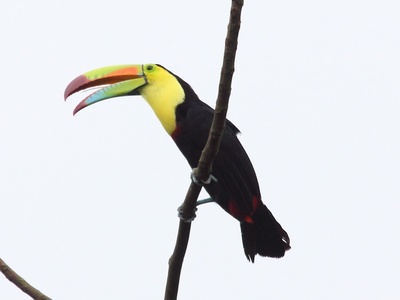
Keel-billed Toucan
Famous for its massive, rainbow-colored bill, this toucan is a key seed disperser. Despite its size, the bill is lightweight and hollow. While primarily a fruit-eater, its main ecological role is consuming and spreading fruit seeds across the forest.
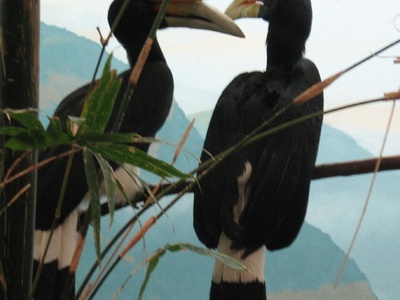
Rhinoceros Hornbill
This large bird is named for the prominent “casque” on its bill. Hornbills are crucial to the forest as they are one of the few birds large enough to swallow and disperse the seeds of large fruit trees, earning them the name “farmers of the forest.”
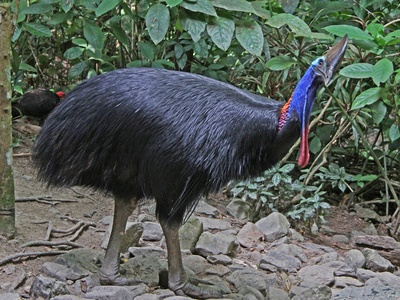
Southern Cassowary
A large, flightless bird with a formidable casque and dagger-like claws, the cassowary is a keystone species. It consumes large fruits whole and disperses their seeds over great distances, ensuring the regeneration of many rainforest tree species.
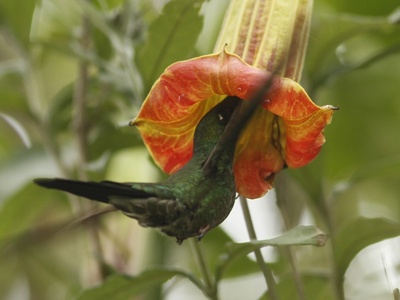
Sword-billed Hummingbird
This hummingbird has the longest bill relative to its body size of any bird. Its extraordinary bill co-evolved with flowers that have very long corollas, making it a specialized pollinator for specific plants in its high-altitude forest home.
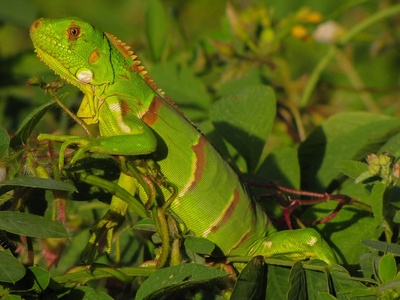
Green Iguana
A large, tree-dwelling lizard commonly seen basking on branches overhanging water. As adults, green iguanas are almost exclusively herbivorous, using their sharp, serrated teeth to shred leaves and other tough plant material. They are excellent swimmers.
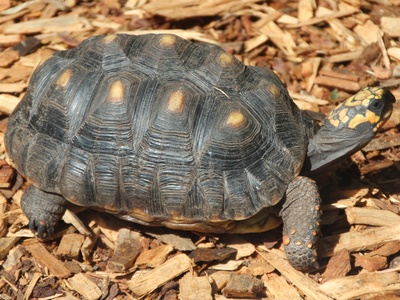
Red-footed Tortoise
This medium-sized tortoise is named for the red or orange scales on its legs. It’s an important seed disperser, wandering the forest floor and consuming a wide variety of fallen fruits, flowers, and even fungi, helping to plant new growth.
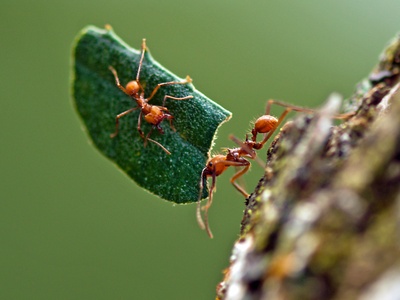
Leafcutter Ant
These incredible insects don’t eat leaves directly but act as farmers. They cut leaf fragments and carry them to vast underground nests to cultivate a specific type of fungus, which is their sole food source. They are masters of agriculture.
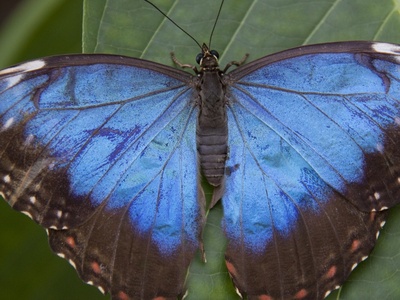
Blue Morpho Butterfly
Famous for its iridescent blue wings, the adult Blue Morpho rarely visits flowers, instead feeding on the juices of fermenting fruit. Its life begins as a caterpillar, which is a voracious herbivore, munching on the leaves of specific rainforest plants.
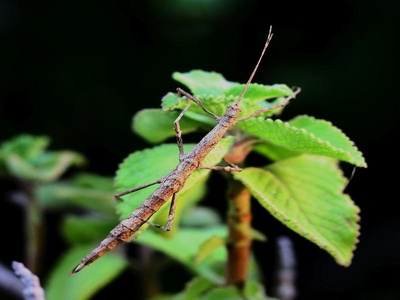
Stick Insect
Masters of camouflage, stick insects perfectly mimic twigs and leaves to avoid predators. These nocturnal herbivores remain motionless during the day and feed on leaves at night, playing a role in pruning forest vegetation from the canopy to the understory.
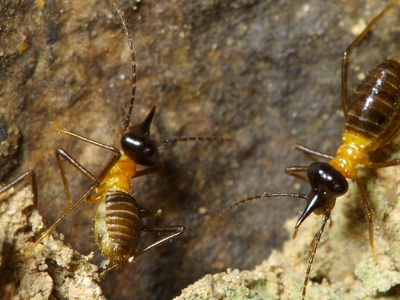
Rainforest Termite
Often mistaken for ants, termites are crucial decomposers that feed on dead wood and plant litter. By breaking down tough cellulose, they recycle vital nutrients back into the soil, supporting new plant growth and forming the base of many food webs.

Rainforest Cicada
The sound of the rainforest is often a chorus of cicadas. Nymphs live underground for years, feeding on sap from roots, while adults live in the canopy, feeding on sap from twigs and branches and filling the air with their distinctive songs.
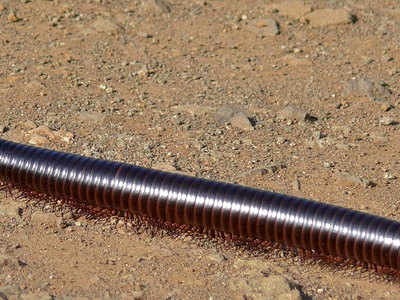
Giant African Millipede
One of the largest millipedes in the world, this gentle giant is a detritivore, slowly moving across the forest floor consuming leaf litter and rotting wood. By breaking down dead organic material, it plays a key role in nutrient cycling.
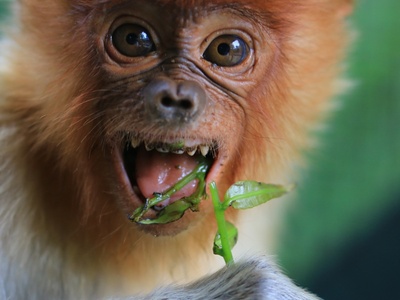
Proboscis Monkey
Found only in the mangrove and riverine forests of Borneo, this monkey is famous for the male’s large, fleshy nose. It has a specialized digestive system to handle a diet of unripe fruit and leaves, which can be toxic to many other animals.
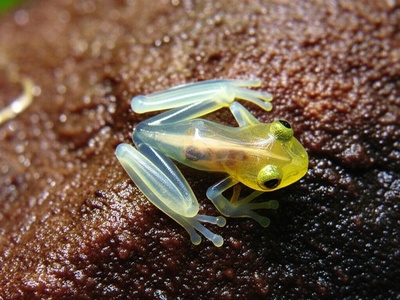
Glass Frog Tadpole
While adult glass frogs are carnivorous, their tadpoles are primary consumers in rainforest streams. They graze on algae and detritus from rocks and leaf litter, cleaning the stream bed and converting plant matter into a food source for predators.
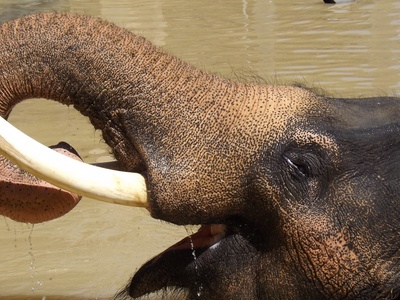
Asian Elephant
The largest land animal in Asia, these elephants are “mega-herbivores” that shape their environment. By pushing over trees and consuming vast amounts of vegetation, they create clearings and pathways, maintaining the structure and diversity of the rainforest.



